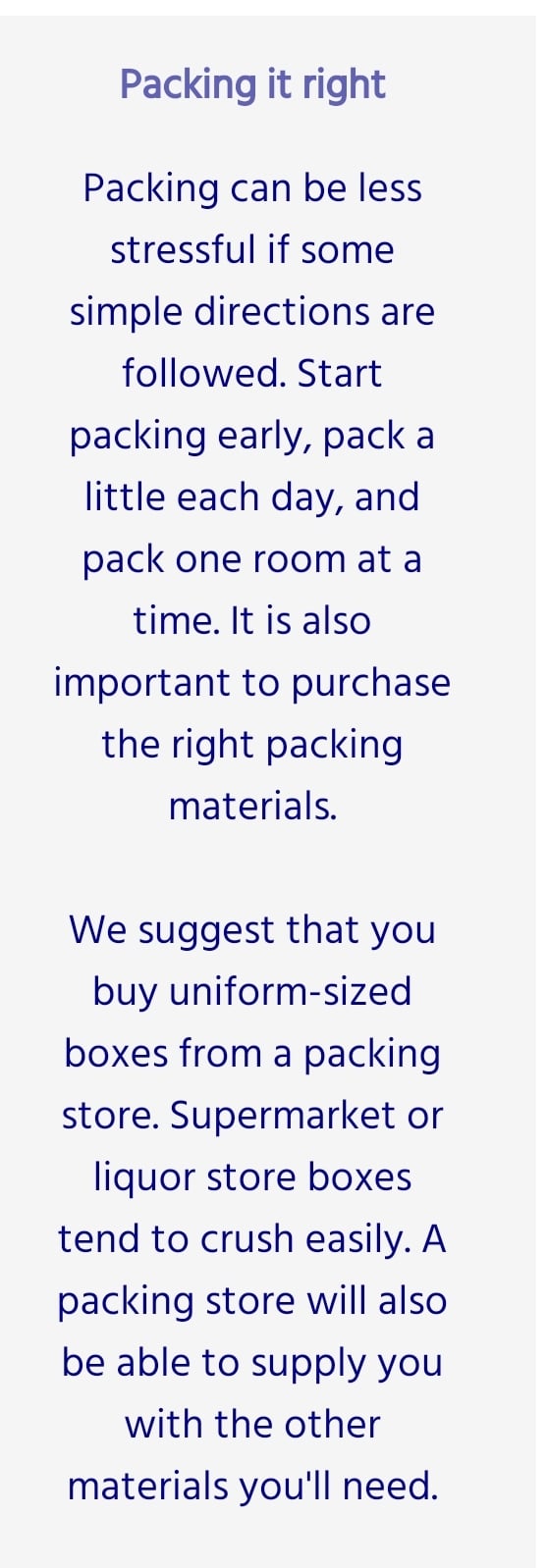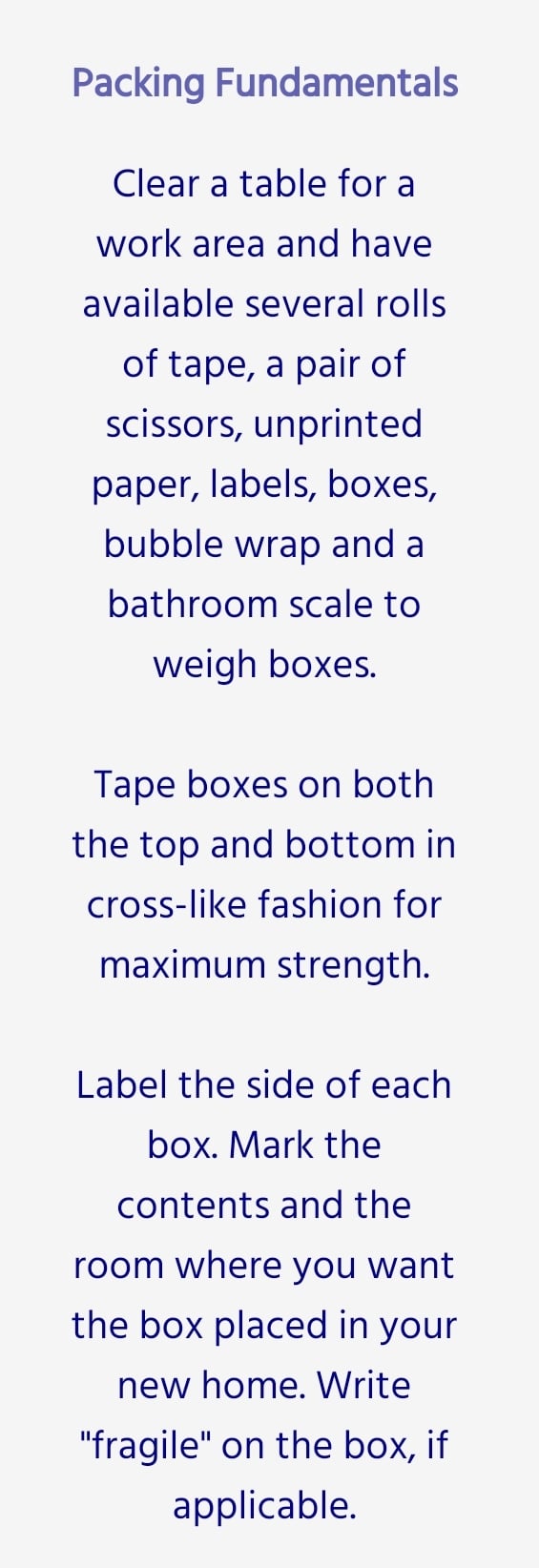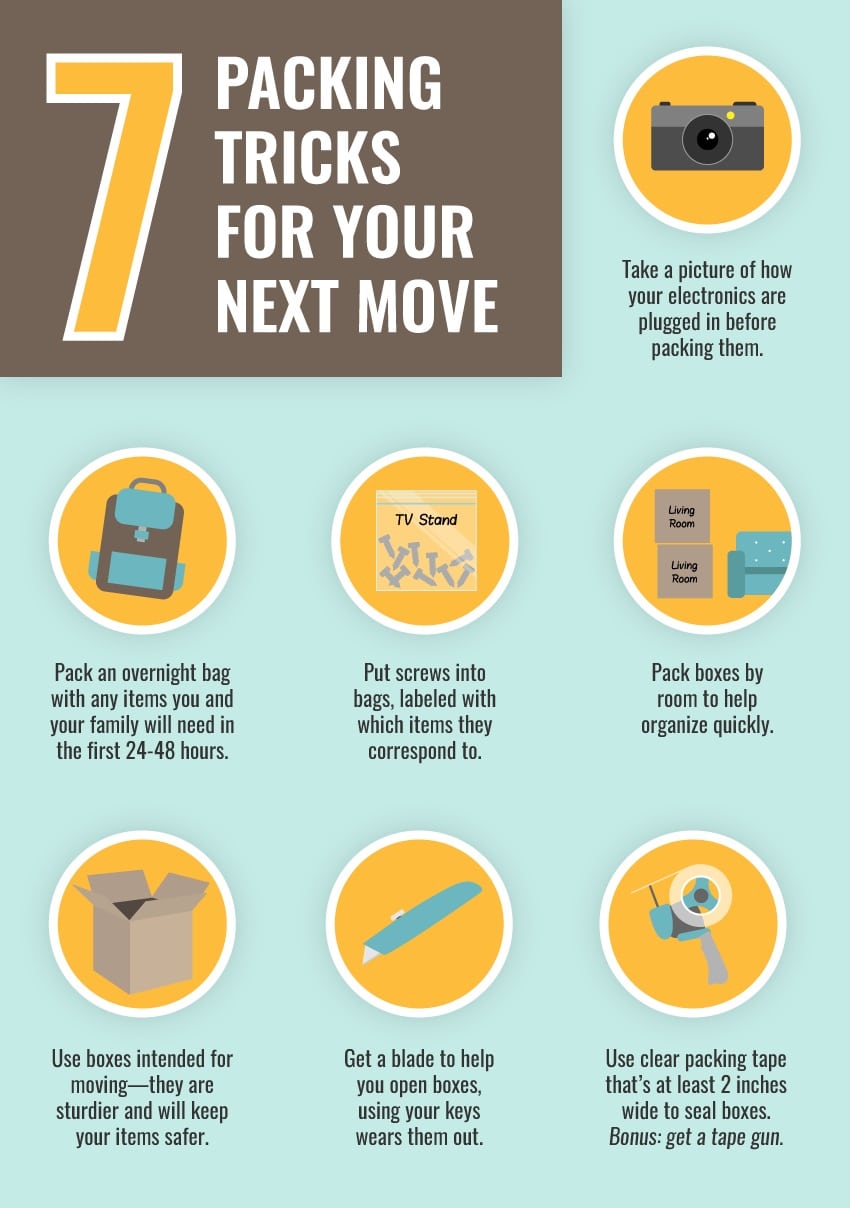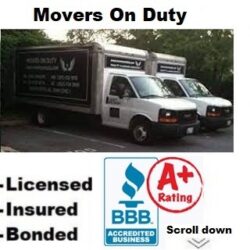General Packing Guidelines
Packing techniques for moving by Movers On Duty
If you decide to do some or all of your packing, this packing guidelines page will help.
Along with general how-tos, you’ll find specific step-by-step instructions on properly wrapping and packing items that require special attention.
Packing is easy when you know what you are doing.

We must say that proper packing is the most important step in safely transporting your belongings. Our commercial movers and our residential movers offering moving serices in your area will move every single box as if it is labeled “fragile” but if you don’t properly pack/wrap dishes, glasses, china cabinets’ contents, and other delicate items, please understand that they might not all make it. Regardless of how careful we try to be.
That’s why our professional packing crews are trained in the best packing techniques, and that’s why it’s so much easier and safer to have us pack for you.
If at any point, you change your mind and would rather have our packers handle the packing, please: Contact Us
This is an important packing tip:
Allow yourself enough time to pack. First pack items you won’t need right away, such as articles stored in the basement, garage, or attic. Wait and pack things you’ll use right up to the moving day last. Packing room by room will help you stay organized.
Label the boxes so our movers can place them in the respective rooms for you once we get to the new house.

How to Construct Boxes and how to pack them:
. Assemble box
Invert the box and fold the flaps. Place one or two long pieces of packing tape across the center seam, and one along each side seam. Try not to cover any printing.
. Make bottom cushion
Put loosely crumpled unprinted newsprint in the carton bottom.
. Wrap all fragile, breakable items in paper
(Not necessary for soft items like bedding, etc.) This not only protects the item but protects other items from it. Wrapping also helps things fit snugly in the box and prevents them from shifting. Use unprinted newsprint for most items, tissue paper for very fragile things.
. Pack large and heavy items first
. Pack smaller items next
Use these to fill in spaces around larger items.
. Fill all empty spaces
Use small items or crumpled paper. Leave no gaps in the carton. This helps make it crush-proof.
. Periodically lift carton
Check weight – the box should not be too heavy for one person to lift comfortably.
. Make a top cushion
Leave 1/4 to 1/2 inch space at the top of the carton. Fill this space with crumpled paper. When closed, the carton’s top or sides should neither bulge nor sag.
. Tape top seams securely
. Label boxes clearly
Write your name, your moving contract number, the room to which the box should go in your new home and a general description of contents. Write “fragile” only if items within are truly fragile. (Otherwise, good loading decisions will be impossible.) Mark “unpack first” on boxes containing items you’ll need right away in your new home.


Pack heavier items on the bottoms of boxes and lighter items on top.
And if you’re loading the truck yourself, put your heaviest boxes first, toward the front of the truck, for balance.
Don’t leave empty spaces in the boxes, pack your boxes fully.
Fill in gaps with clothing, towels, or packing paper. Movers often won’t move boxes that feel loosely packed or unbalanced.
Don’t mix items from different rooms in the same box.
It will make your packing quicker and your unpacking a lot easier, too.
Label each box with the room it’s destined
Our movers will place the boxes in the respective rooms. So, when they leave you won’t have to be moving boxes around.
Getting stickers that say FRAGILE might also be a good investment. We provide these for free when we pack.
Tape your moving boxes well
Use plenty of tape to close the bottom and top seams.




